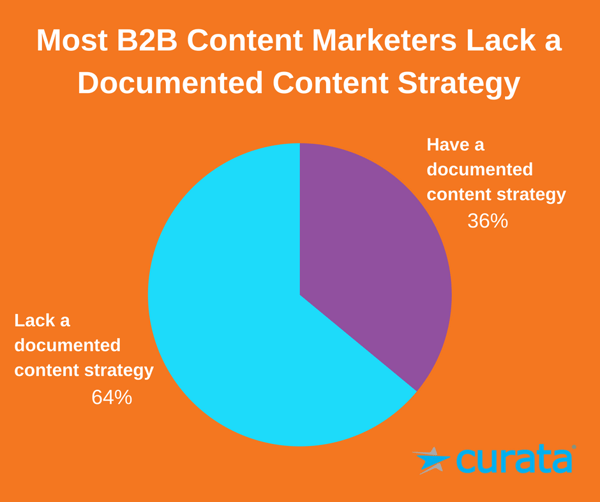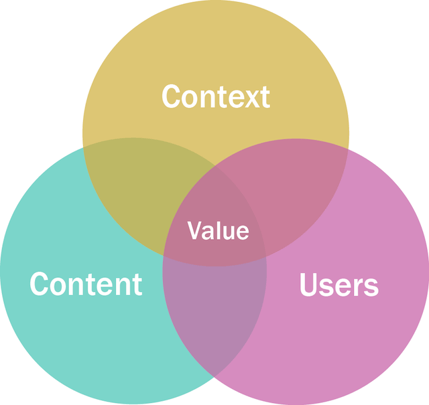Content has proven itself king time and again. The enthusiasm with which B2B and B2C companies are investing in content production, has however brought up a significant question- Are users able to find the relevant content?
Finding the relevant web content has been one of the biggest issues that enterprises and users both have been facing
Finding the relevant web content has been one of the biggest issues that enterprises and users both face and so, it needs to be addressed without further delays to avoid poor user experiences and negative sentiments.
Additionally, big brands and companies also lose out on opportunities due to the content searchability issue, like failing to quickly come up in the search results for a given phrase or set of keywords, which can jumble the company’s revenue percentage.
The problem can be fixed with little effort for Drupal powered enterprises. They just have to inculcate content tagging while classifying their piece of content.
Having said that, this blog will provide insights on content tagging, taxonomy, and how implementing these factors on your Drupal website can take your marketing efforts to a whole other level.
Why Does Strategic Taxonomy Matter?
Content tagging can be huge resource-demanding and tedious task, especially when done manually, leaving companies wondering even if it’s worth the efforts. So, before building your tagging taxonomy, it’s better to understand why it matters.
All your efforts put into procuring and producing content will go wasted if there is no one to read it
- Searchability- For your targeted audience to find it
Enterprises have diverse and in-depth categories of resources available but what if users visit the site and could not find the desired content, they’re going to leave of course.
All your efforts put into procuring and producing content will go wasted if there is no one to read it. Thus, it’s better to help your targeted audience access your content in the simplest and convenient way through a proper tagging structure. Source: Curata
Source: Curata
- Usability: For your internal team to leverage it
Content tags not only benefit users but also internal teams of the company, especially sales. Including tags such as buying stage, persona, industry, product line, and geographical region, will only benefit the sales team to leverage and share relevant content with potential customers that align with those components.
It will facilitate key stakeholders in disseminating content in their network to move users through the preferred funnel
This strategic content plan and execution as per business goals will increase the shareability of content for your users and will also facilitate key stakeholders disseminate content in their network to move users through the preferred funnel.
- Data Insights: For your analytics team to gain insights from it
Another key benefit of proper tagging taxonomy can be leveraged through tag structure. It helps in building custom segments of data for your analytics teams to extract data and insights on the content framework, calendar promotion schedule, and content production cadence, and audience preferences so that you can tailor your content accordingly.
- Sales Acceleration: For your readers to navigate, curate and refer to it
The agenda has been always on enhancing user experience. If they have engaged with a piece of content that resonated with them, they are more likely to read more content on the same topic, category or style. Tagging taxonomy with simple tag filtering showcase users the next article they should read as in line with your preferred funnel structure.
If users have engaged with a piece of content that resonated with them, they are more likely to read more content on the same topic, category or style
All this can be achieved by simply organizing content through a strict tagging taxonomy. A better content tagging structure can create more business efficiencies for users and internal teams- they can tangibly impact the bottom line!
Content Tagging and Drupal Taxonomy
In Drupal, taxonomy is the core module used for categorizing or classifying content being built on the website with the CMS. It is critical to the website’s information architecture, on both the back and front ends.
Taxonomies in Drupal consists of vocabulary associated with them. This vocabulary list helps CMS to determine what items belong with what types of content. Further, vocabularies have terms with them, where the list of terms define the contents of the vocabulary.
These can be a part of a hierarchy or simply a compilation of tags. Tags group nodes (elements in Drupal sites that contain content; eg. articles and basic pages) together. These can then be referenced with the search on the website.
Sites built on Drupal can have an unlimited number of vocabularies and terms, so complex sites can be built using the framework. These two elements associated with your website can serve several purposes, especially for displaying content and managing content assets. It can also be important for reference as well.
Content tags, on the other hand, are a great way to navigate websites. In fact, this type of tag often appears as a hyperlink that users can click on to view other content in the system that contains the tag. These are used within the content management system, say, Drupal, to organize, filter, and relate content for end-users.
These tags can be applied in a few different ways, depending on the system that is using them. Some systems will allow for the creation of highly controlled tagging lists that content providers can choose terms from. Other systems may supply a free-tagging method, where users just type in terms. Some systems allow for both methods.
How to Use Taxonomy in Tagging Content?
Although you can optimize your content based on its type, you might also want to view content based on what it is about. Taxonomy allows you to link terms with the content which you can put to use in organizing and presenting content on your website.
Taxonomy allows you to link terms with the content which you can put to use in organizing and presenting content on your website
You can refer to this blog , Adding Tags with Drupal Taxonomy In 9 Steps, to learn using taxonomy in tagging content. There are nine steps given which you can follow to classify your content hassle-free and increase your site visibility.
How Drupal-powered Enterprises Can Benefit From Using Taxonomy?
Taxonomy plays an important role in content strategy as it can make sense of your organization’s content by supporting the following activities-
- Search and Discovery
This is the most common and useful benefit of taxonomy- as it facilitates search and discovery in knowledge-driven and Drupal-powered organizations; leading to improved discovery layers including search, related content, and personalization so that it can work across various content repositories and even multiple organizations. In the end, the objective is to empower users and knowledge workers so that they can quickly find what they need. Search is essential for their productivity and taxonomy can ensure it to a great extent.
Search engines like Google and Bing will be able to easily determine the site’s content, architecture, design, and organization of the website files, and hence improving ranking on SERP.
- Permissions or Visibility
The goals of Drupal-powered organization determines how best to use taxonomy, permissions & metadata to share the information (public, confidential, semi-confidential, etc.) within the organization with various parties. There are many nodes and specific content that only certain members with the organization are allowed to edit.
Developers can use the permissions in the administration page within Drupal to assign permissions and roles for registered users of the site
Developers can use the permissions in the administration page within Drupal to assign permissions and roles for registered users of the site. This ensures high flexibility to developers as they can also modify the content which the public can view.
- Repurposing
Re-using the existing content wherever it’s relevant instead of starting from scratch or simply recombining the taxonomy (if there is not even one in place to allow items to be found) into new useful information sets can save plenty of time and efforts of the organization. It can also help in reaching new audiences and reinforcing your message.
- Future-proofing knowledge held in the business
Taxonomies are “knowledge insurance” that stores and shares classified information assets, to retain knowledge accessibility while people move on. Obviously, a taxonomy can also move by continuously evolving in line with the needs of the organization.
6 Best Practices To Tag Content Well
- Consistency is the key
Use clear, consistent tagging throughout your organization to provide a uniform experience to the customers. Marketing and sales team should use the same taxonomy terms to tag content.
However, if you won’t share tags from the same taxonomy, you are going to have a fractured website.
Too many tags oversaturate search results, and too fewer tags fail to provide enough personalized content
- Strike the right balance
Users find it informative when tags are marked appropriately. Too many tags oversaturate search results, and too fewer tags fail to provide enough personalized content. So, it’s important to find the right balance.
- Focus on the user
The right balance can be easily achieved by focusing on users’ experience. Ponder upon the tags before adding that, will it add value to users’ experience or is it just because you want the asset to get more attention on the site?

Source: business2community
Take yourself out from the tagging equation and focus on the experience part, you’ll get a much clearer picture of which tags are and aren’t appropriate
- Prioritize your time
Tagging consumes a lot of time so it’s a good practice to prioritize and maximize your time by evaluating the content. Find out which assets need more detailed tagging (for say, only those that will live on the site for a long time) and which can have more general tagging as they will change often (e.g. industry reports) so that you can your time and sanity.
- Fill your content containers well
A tag associated with a topic having a plethora of information within it is likely to keep a reader more engaged than a tag that has only one or two pieces of content. So, before creating a new tag, ensure that you have ample amount of content that could be tagged the same way.
- Consider SEO while selecting tags
Use keyword planner tool to check SERPs and find out what keywords do users use to search the content- is it the acronym, plural construction, or spelled out version.
Drupal Modules
Here are some modules listed that work around the principle of taxonomy and content tagging-
The Power Tagging module is linked with thesaurus or taxonomy to interpret content and its concepts in Drupal. Users can easily curate all suggested tags at one place or can even compile collections of Drupal content nodes to create a semantic index. This makes search more comfortable than ever before.
It also allows you to customize your entity’s tags with manual tags and perform multilingual tagging.
Features
- Tweak your entity's tags with manual tags combined with an auto-completion of already used tags.
- Supports multilingual tagging
- Whole content can be tagged automatically at once via Bulk-Tagging
Available for - Drupal 8 | Not covered by Security Advisory
This Drupal module provides context for content items by displaying a view block with links to other similar content. The similarity is defined as per the taxonomy terms assigned to content. Views are available based on similarity within each of the defined vocabulary for a site as well as similarity within all vocabularies.
Simply put, you can use this module by creating a free tagging vocabulary called “Tags” assigned to the content types on which you would like to display a similar view block.
Available for - Drupal 8 | Covered by Security Advisory
Good search engine optimization practices bring organic traffic to the website. And so this module helps in updating the heading tag at the top of the taxonomy term page so that it appears on top in SERPs. This is the only module that lets you control the title individually for every term.
Enterprises should add more user-friendly, keyword-rich, and describing words to this heading element.
Available for - Drupal 7 | Covered by Security Advisory
Azure Cognitive Services API module seamlessly incorporates intelligent features and technology into the Drupal applications, like Machine Learning, Artificial Learning, and Natural Learning Process, to detect speech, facial and vision recognition other than detecting the emotions.
Among the 4 features it provides text analysis, API module is helpful for tagging
- Azure Text Analytics API Module
Text Analytics API is a cloud-based service that provides advanced natural language processing over raw text and comprises of three main functions- sentiment analysis, key phrase extraction, and language detection.
Available for - Drupal 8 | Covered by Security Advisory
This module helps in optimizing content around keywords in a fast, natural, and non-spam manner. It also keeps a check on other SEO factors such as the length of the post, written meta-description using focused keywords, and subheadings within the post.
This real-time page analysis ensures that your content is easily searchable and liked by users.
Available for - Drupal 8 | Covered by Security Advisory
It is a great SEO module since it takes away the boring and laborious task from you. It automatically defines URLs which are both user-friendly and relevant as per the category and page title. This clarity in classification helps users churn information with ease and you can also get brownie points from search engines.
Available for - Drupal 8 | Covered by Security Advisory
Metatag module facilitates enterprises to provide more metadata on their website. This includes tags, page titles, descriptions, etc. As a result, it helps Google in ranking the website in SERPs.
Available for - Drupal 8 | Covered by Security Advisory
It is a semantic vocabulary of tags that you can add to your HTML to improve the way search engines read and represent your page in SERPs.
Available for - Drupal 8 | Covered by Security Advisory
Final Words
Embracing taxonomy and tags to classify content is a great way to solve the problems of those organizations who possess a gigantic amount of data or are anticipating to create a huge amount of it in the future.
Also, since Drupal is open-source software, there is an outstanding opportunity for enterprises to learn from a community of developers and users. However, the foremost task that organizations should do is start thinking hard about what they are doing with their content once it is classified and how they intend to deliver it so that it serves best customers’ manifold needs.
Our Services
Customer Experience Management
- Content Management
- Marketing Automation
- Mobile Application Development
- Drupal Support and Maintanence
Enterprise Modernization, Platforms & Cloud
- Modernization Strategy
- API Management & Developer Portals
- Hybrid Cloud & Cloud Native Platforms
- Site Reliability Engineering




